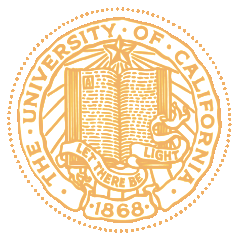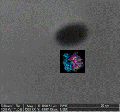 |
- Ultrafast optics lab dedicated to time-resolved studies of solid-state and optofluidic devices as well as optical particle trapping
- Single particle spectroscopy lab dedicatedd to advanced single molecule spectroscopy and rubidium spectroscopy on a chip
- Characterization lab dedicated to scanning probe microscopy and thin film characterization
- W.M. Keck nanofabrication lab dedicated to fabrication, imaging and characterization of nanoscale optofluidic devices
- Microfabrication cleanroom dedicated to microscale patterning of devices (School of Engineering and QB3 shared core facility)


 |
We use numerous both conventional and custom-modified experimental techniques in our lab.
These include:
• Single molecule spectroscopy: Fluorescence correlation (FCS), fluorescence lifetime (FLM),
• resonance energy transfer (FRET) etc.
• Near-field optical microscopy (NSOM)
• Femto- and picosecond time-resolved laser spectroscopy
• Magneto-optic Kerr spectroscopy
• Optical waveguide measurements
• Nonlinear optics with sub-micron resolution
• Scanning probe microscopy (AFM, MFM, STM)
• Linear and non-linear atomic spectroscopy
• Fourier spectroscopy
• Confocal microscopy
• Nanofabrication (focused ion beam etching, electron beam lithography)
The following links lead to more detailed descriptions of the research topics. If you are planning on pursuing a Ph.D. degree or a postdoctoral position at the interface between Physics and Electrical Engineering, please send your resume to Professor Holger Schmidt (hschmidt@soe.ucsc.edu).
Sponsors We gratefully acknowledge funding for our research projects by the National Science Foundation, the National Institutes of Health (National Institute for Biomedical Imaging and Bioengineering), Office of Naval Research, The W.M. Keck Foundation, the National Academy of Sciences, DARPA/AFOSR, The Rogers Family Foundation, the NASA University Affiliated Research Center (UARC), and Ted Goldstein, Computer and Information Science, class of 1983. |
 |















